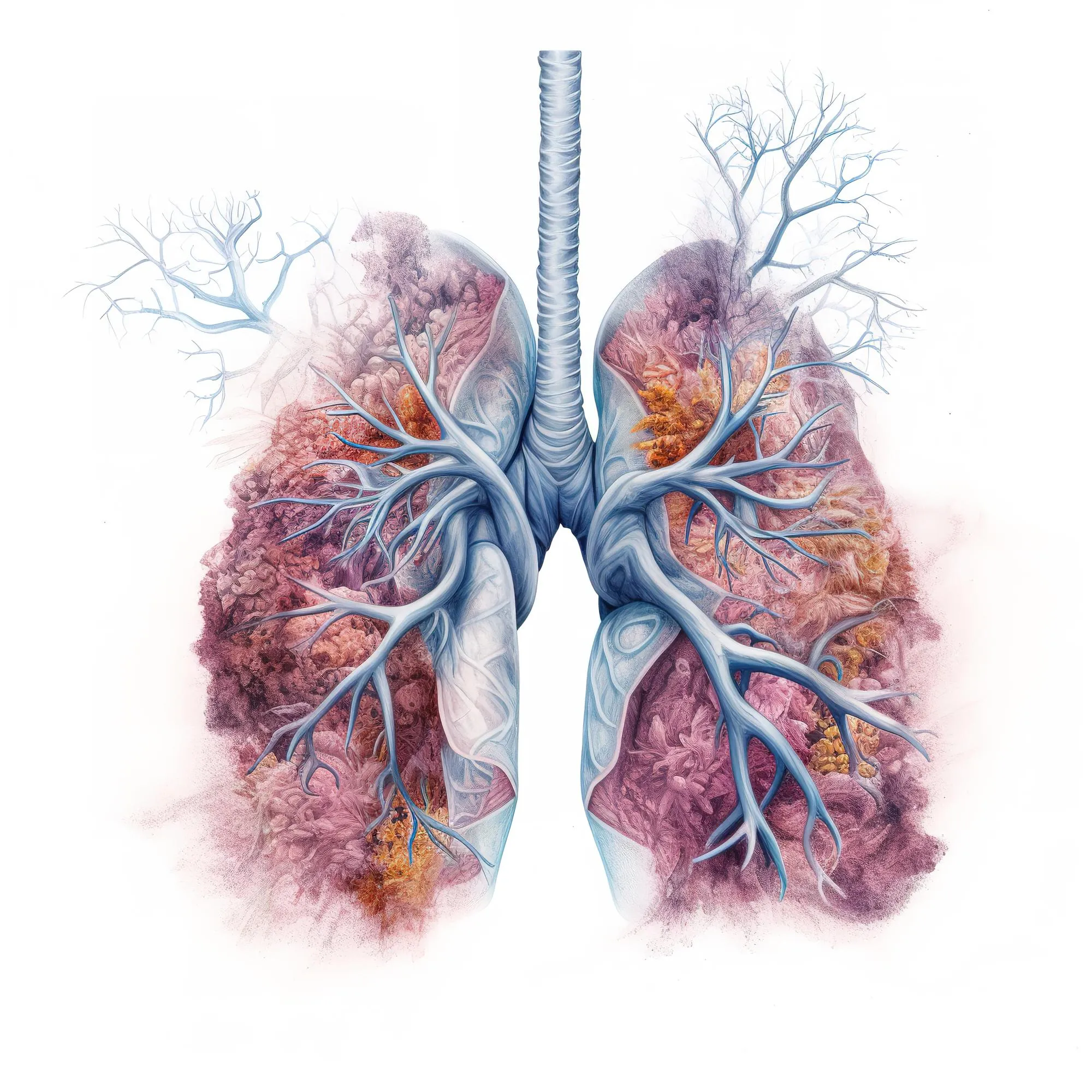Abstract
A retrospective cohort study has suggested that the use of tiotropium inhalers is associated with decreased all-cause mortality in patients with tuberculous destroyed lung (TDL). This novel finding emerges from an analysis of hospital and nationwide health insurance claims data in South Korea, indicating the potential benefits of bronchodilator inhaler therapy beyond its known effectiveness in improving lung function.
Introduction
Tuberculous destroyed lung (TDL) is a chronic pulmonary condition resulting from pulmonary tuberculosis, characterized by irreversible destruction of lung parenchyma and accompanying respiratory insufficiency. Affected individuals often experience reduced quality of life, diminished lung function, and a greater susceptibility to respiratory failure and death. While inhaler therapies have been widely applied to ameliorate the symptoms and improve lung function, their impact on mortality has been largely unexplored until recently.
A study published in the prestigious journal Respiratory Research has shed light on the effect of tiotropium, a long-acting bronchodilator, on the mortality rates among the TDL patient population. Through a retrospective analysis, researchers have demonstrated that the use of tiotropium inhalers might contribute to a decrease in mortality risk for these patients. The implications of these findings, particularly for treatment protocols and patient management, could be significant.
Background
TDL is a notorious complication of inadequately treated or severe cases of tuberculosis, leading to cicatrization and fibrosis in the lung. Individuals with this condition often exhibit persistent airflow limitation similar to that observed in chronic obstructive pulmonary disease (COPD). Previous research has indicated that bronchodilator agents, such as tiotropium bromide, can effectively improve lung function in patients with TDL. Yet prior to this study, the long-term effects of such treatment, especially concerning mortality, had not been systematically investigated.
Methodology
The study, based on data from a cohort of 963 patients with TDL, made use of South Korea’s comprehensive health insurance claims database. By linking hospital records with insurance claims, the researchers were able to track the use of tiotropium inhalers among patients and their subsequent health outcomes over a ten-year period.
Using a propensity score matching technique to reduce potential confounding factors, the subjects were divided into two equal groups: those who received tiotropium inhalers and those who did not. Both cohorts were balanced in terms of baseline characteristics, including age, gender distribution, and lung function as measured by forced expiratory volume in 1 second (FEV1). A Cox proportional hazards model was employed to identify the risk factors and to quantify the association between inhaler use and mortality risk.
Results
The key finding from the analysis demonstrated that patients who received tiotropium inhalers had a significantly reduced all-cause mortality risk when compared to those not receiving the treatment. This association persisted after adjusting for various potential confounders, suggesting a protective effect of the inhaler therapy.
Subgroup analyses further identified specific populations within the TDL patients who seemed to benefit the most from tiotropium therapy, adding depth to the potential clinical applications of the findings.
Discussion
The study authors indicate that these results highlight the importance of considering inhaler therapy as a key component in the management of TDL. The reduced mortality risk seen in tiotropium users could be attributed to improved maintenance of lung function, reduction in the frequency and severity of acute exacerbations, and overall better respiratory health.
However, the authors also acknowledge inherent limitations, such as the retrospective nature of the study and the potential for unmeasured variables to influence outcomes. They call for further prospective studies to validate these findings and to explore the mechanisms underlying the observed benefits.
Conclusion
The study contributes crucial insights into the management of a historically challenging patient population. It provides a strong foundation for considering long-term bronchodilator therapy with tiotropium inhalers as part of the standard of care for patients with TDL, with a potential to significantly impact survival.
The study’s DOI is 10.1186/s12931-019-1055-5.
Keywords
1. Tiotropium inhaler TDL survival
2. TDL long-term management
3. Tuberculosis lung function therapy
4. Bronchodilator reduced mortality
5. Respiratory research TDL patient outcomes
References
1. Kim HC, Kim TH, Rhee CK, Han M, Oh YM. Effects of inhaler therapy on mortality in patients with tuberculous destroyed lung and airflow limitation. Ther Clin Risk Manag. 2019;15:377–387. doi: 10.2147/TCRM.S194324.
2. Park JH, Na JO, Kim EK, Lim CM, Shim TS, Lee SD, Kim WS, Kim DS, Kim WD, Koh Y. The prognosis of respiratory failure in patients with tuberculous destroyed lung. Int J Tuberc Lung Dis. 2001;5:963–967.
3. Allwood BW, Myer L, Bateman ED. A systematic review of the association between pulmonary tuberculosis and the development of chronic airflow obstruction in adults. Respiration. 2013;86:76–85. doi: 10.1159/000350917.
4. Kim L, Kim JA, Kim S. A guide for the utilization of Health Insurance Review and Assessment Service national patient samples. Epidemiol Health. 2014;36:e2014008. doi: 10.4178/epih/e2014008.
5. Celli B, Decramer M, Kesten S, Liu D, Mehra S, Tashkin DP, Study Investigators UPLIFT. Mortality in the 4-year trial of tiotropium (UPLIFT) in patients with chronic obstructive pulmonary disease. Am J Respir Crit Care Med. 2009;180:948–955. doi: 10.1164/rccm.200906-0876OC.
